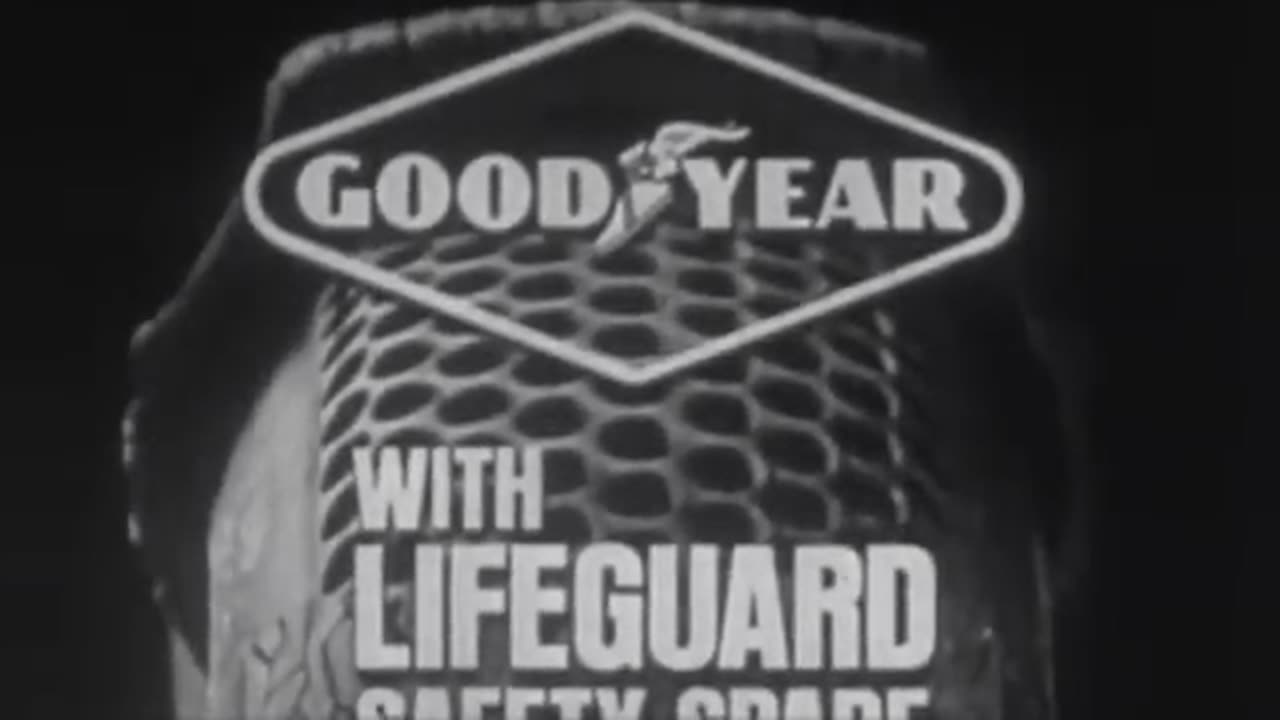Premium Only Content

1960s Goodyear Commercial 'When There's No Man Around'
The 1960s Goodyear "When There's No Man Around" commercial is a notable example of mid-20th-century advertising that reflects the gender norms of its era. It promoted Goodyear’s Double Eagle "Tire in a Tire", a dual-layer tire designed to function even after a puncture, eliminating the need to change a flat manually.
The ad centers on a woman stranded on a rainy highway with a blown tire. With no man present to assist, she is left helpless—highlighting the idea that women were not expected to handle car repairs. The tagline, "When there's no man around, Goodyear should be," underscores the product’s reliability as a substitute for male assistance.
Though praised at the time for its creativity and effectiveness, the commercial is now widely viewed as sexist by modern standards, reinforcing outdated stereotypes about gender roles.
The commercial opens with a dramatic, noir-like scene: a woman alone on a dark, rainy road, her car disabled. She walks to a phone booth (dialing the fictional number 311-555-2368, commonly used in media) to call for help. The narrative implies she wouldn’t be in this situation if she had Goodyear’s Double Eagle tires, which contain a built-in spare.
The ad showcases the internal structure of the tire, emphasizing its innovative "safety spare" design. The underlying message is clear: Goodyear protects you when you can't rely on a man—a reflection of 1960s societal attitudes.
Despite its dated premise, the ad was part of a long-running campaign, with print and TV versions appearing as late as 1968.
This commercial holds a special place in advertising history: it was the first ad ever aired during Super Bowl I in 1967. At a time when Super Bowl ad slots cost just $42,500 for 30 seconds, Goodyear’s spot helped set the stage for what would become one of the most anticipated advertising events of the year.
The ad was well received at the time and contributed to Goodyear’s strong brand identity. Today, it serves as a cultural artifact, illustrating how advertising both shapes and reflects societal values.
-
 7:57
7:57
Blackstone Griddles
1 day agoDouble Barrel Sausage Sandwich | Blackstone Griddles
16K1 -
 32:24
32:24
Forrest Galante
12 hours agoHunting and Eating The World's WORST Fish (Everglades At Night)
104K7 -
 32:10
32:10
Nikko Ortiz
17 hours agoSecret Agent Infiltrates Neo-Nazis...
20.4K16 -
 15:04
15:04
MetatronGaming
1 day agoOriginal Commodore 64 VS C64 Maxi - Review and Comparison
26.9K9 -
 9:46
9:46
MattMorseTV
15 hours ago $21.20 earnedTrump just SHUT DOWN a $287,000,000 FRAUD RING.
30.4K87 -
 15:48
15:48
GritsGG
18 hours agoWinning a Rare Solos Prison End Game on Warzone!
22.8K3 -
 11:37
11:37
The Pascal Show
17 hours ago $7.52 earnedTHEY WANT TO END HER?! Candace Owens Claims French President & First Lady Put A H*t Out On Her?!
25.1K23 -
 LIVE
LIVE
Lofi Girl
2 years agoSynthwave Radio 🌌 - beats to chill/game to
537 watching -
 24:30
24:30
DeVory Darkins
19 hours agoMarjorie Taylor Greene RESIGNS as Minnesota dealt MAJOR BLOW after fraud scheme exposed
86.4K129 -
 2:19:48
2:19:48
Badlands Media
1 day agoDevolution Power Hour Ep. 409: Panic in the Narrative — Epstein, Israel, and the Manufactured Meltdowns
181K71